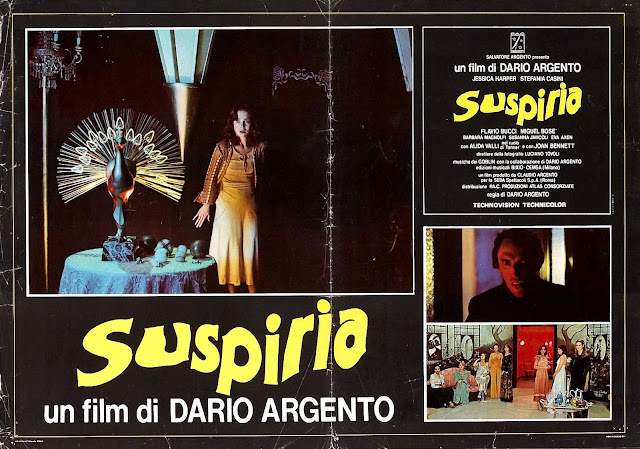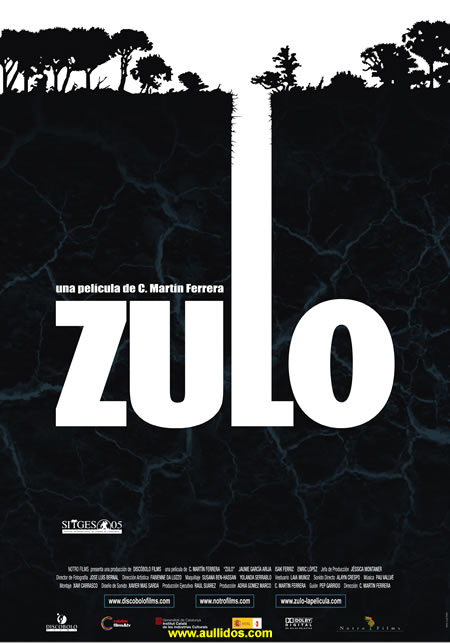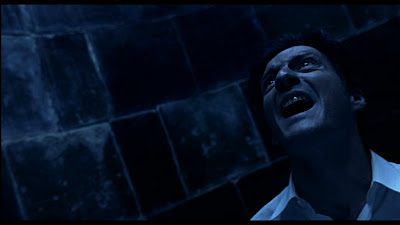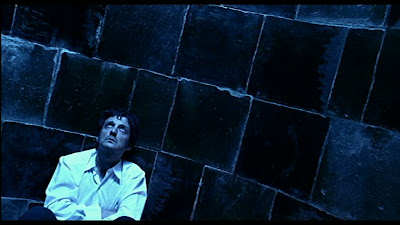Psychological
Suspiria

SUSSSSSSSSPIRIA! On a great big screen!
Last night, after a week of Argento film’s, I got to see his spellbinding masterpiece Suspiria on a cinema-screen in the National Media Museum as part of the Bradford International Film Festival. I’d obviously wound myself into a bit of a frenzied excitement about it through the week and it certainly did not disappoint.
Every time I hear someone say they choose to watch films at home rather than at the cinema, mostly due to all the other film-goers, I think to myself “You’ve just been going to the wrong films with the wrong people!”. Last night’s audience had almost all seen the film before and sat in captivated silence, tittering nervously at the occasional gentle comic moments and - even before fun - audibly anticipating oncoming moments of horror. If a bad crowd can ruin a film, a great crowd can make one. Not that Suspiria needed any help in that respect…
My first and only minor gripe is that it was very sadly the cut version. This was an original cinematic print taken from the Media Museum’s extensive archive and so was a print of the X-rated version that the BBFC approved in 1977, after demanding 1m13 of cuts (Cut info at Melon Farmers). Now, to those not familiar with horror film, particularly of BBFC-butchered horror film of a couple of decades ago, 1m13 might not sound very much. It also might not sound so important if I tell you that the full extent of the cuts involved removing a series of close-ups of stabbing, someone struggling through barbed wire and a dog biting a man’s throat. Cuts, however, do make a difference to the rhythm and pacing of a film. Suspira is a film that, like so many Argento, thrives on the atmospheric build-up, to the point that the death scenes actually become a kind of release. For a couple of them to be dramatically shortened here was a shame.
Still, whilst that was the downside to it being an original theatrical print, there were certainly upsides. The first (and some would reject this) was that the image did have a wonderfully scratchy look. Anyone who’s seen a film in cinemas that was filmed entirely in HD-digital knows how clinical and sterile it can look (I’m looking at you Public Enemy!) and, whilst I’m not suggesting scratchy is the way forward, there was certainly something enjoyable about watching a 70s film I thought I’d never see in a cinema, complete with all the visual wear and tear that a 30 year old 35mm reel has experienced (even if carefully looked after by the Museum)
The second benefit was the sound. The sound! Anyone who’s seen Suspiria, an Argento film or evne read any of my blog from this week will know that sound makes up an enormous part of Argento’s films. Suspiria is (arguably) the very best of these, scored again by the ever wonderful Goblin, and positively throbs, jangles and crashes at you. Original print, combined with cinema sound system made it an utterly fantastic experience that I’m sure I’ll never be able to repeat (especially as most commercial releases saw the soundtrack savagely remixed).
The film itself is a whirling, semi-nonsensical, breathtaking journey of colour and sound, moving from the giallo murder-mystery into something a whole lot more supernatural, with savagely brilliant results. I really don’t want to say too much more about the actual film, save to say that it is pretty much the best example of all the techniques I’ve been seeing this week in all his other films. It’s not perfect (the scene-with-the-bat is awful) but it’s brilliant, beautiful and should be seen by everyone.
Zulo (Hole)

Right. Zulo. Hmm…
Zulo is, despite being clever, intriguing, mysterious and a whole host of other good adjectives, at it’s heart a 77 minute long short-film.
For reasons I’ve never entirely understood, we don’t seem to have much of a tradition of short-films in the UK (or the US as far as I know). Sure, there are handfulls of short-films screened at film festivals but compared to the Spanish, we’re a bit thin on the ground in the short film category. Just google cortomentraje to see the wealth of - often free-to-watch- Spanish language websites devoted entirely to the short-film. It’s a difference that’s even reflected in the language; in English we say short-film, implying a mini version of a ‘real’ film, whilst in Spanish the words cortomentraje and largomentraje are given equal standing. Each exists in it’s own right, rather than one being a diminished form of the other. (As an interesting aside, the same happens in literature: the Spanish have cuentos and novelas whilst we only manage story/novel and short-story/novella)

With the cultural differences out the way, the puzzling aspect about Zulo is that, by rights, it ought to be a short film. To summarise the plot briefly (it can only be brief): a man awakes to find himself in a hole. He is kept there, fed but imprisoned by two monosyllabic balaclava-sporting captors.
That’s more or less it.
It’s decidedly well done; the cinematography is never less than beautiful, it’s claustrophobic and intense and you can really feel for Manuel as he slowly goes mad, desperately trying to keep hold of his physical condition (running in circles around his tiny prison) and cling to his sanity. Jaime Garcia Arija is fantastic as the imprisoned Manuel and, generally, it’s hard to find fault with the film.
Except for there being 77 minutes of it.
I feel ungrateful for moaning about this - I definitely enjoyed it as a whole - but it was simply too long for the content. With a few of the endless broodingly slow scenes clipped, this would be a tense and brilliant psychological thriller I’d recommend without hesitation. As it is, it’s merely good. Damn with faint praise, yes, but still worth a watch if you’ve got a quiet hour and a bit.

